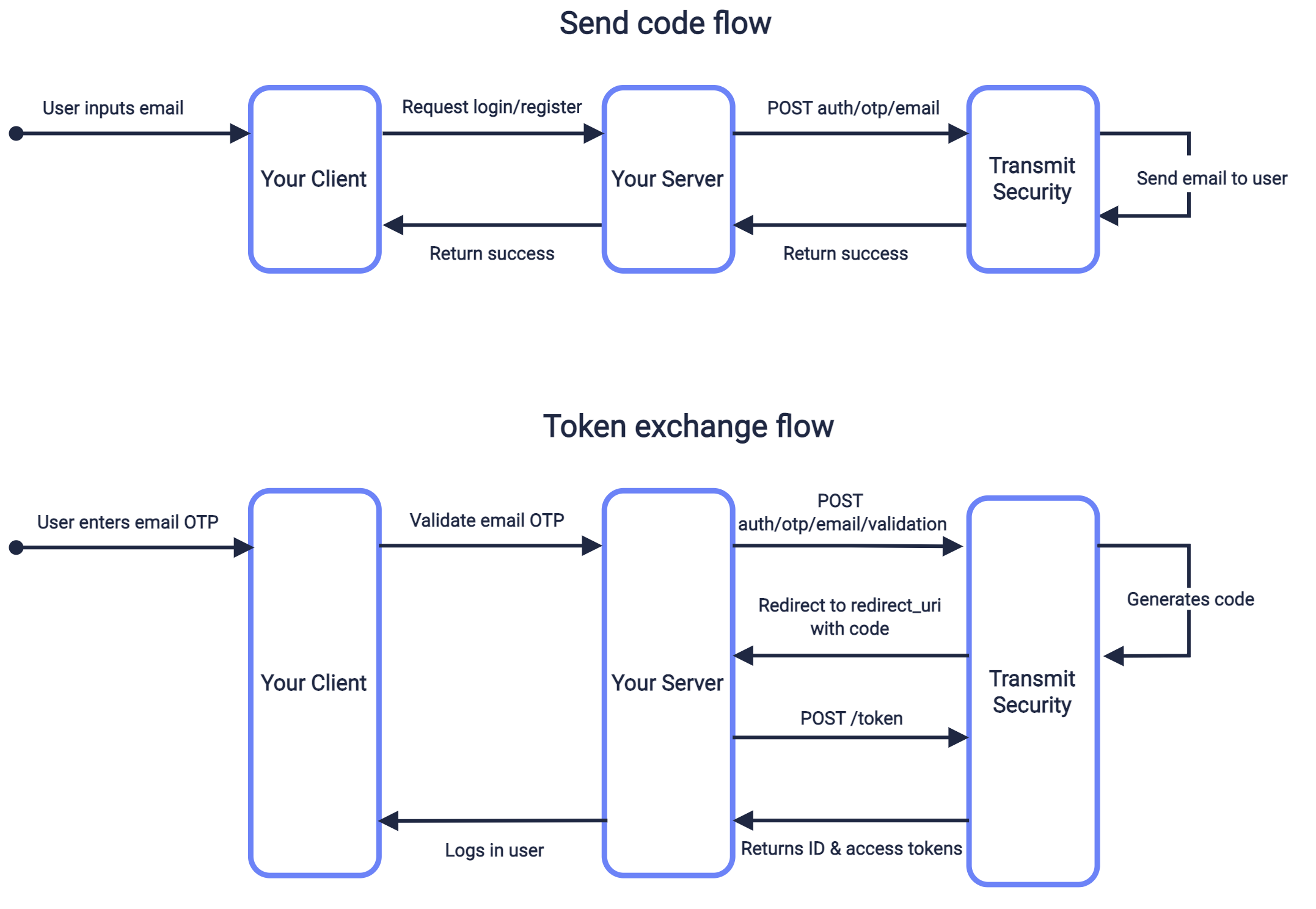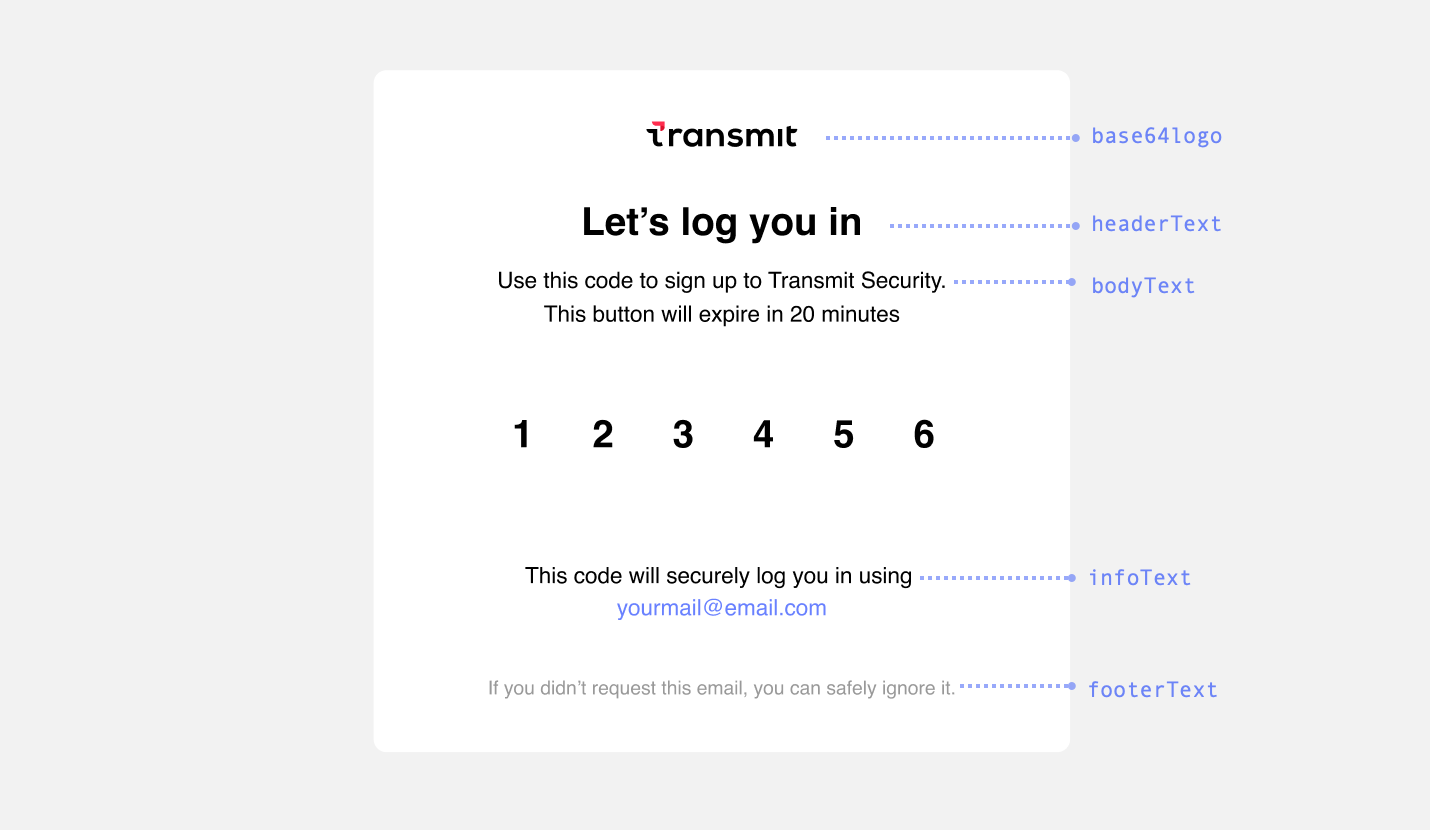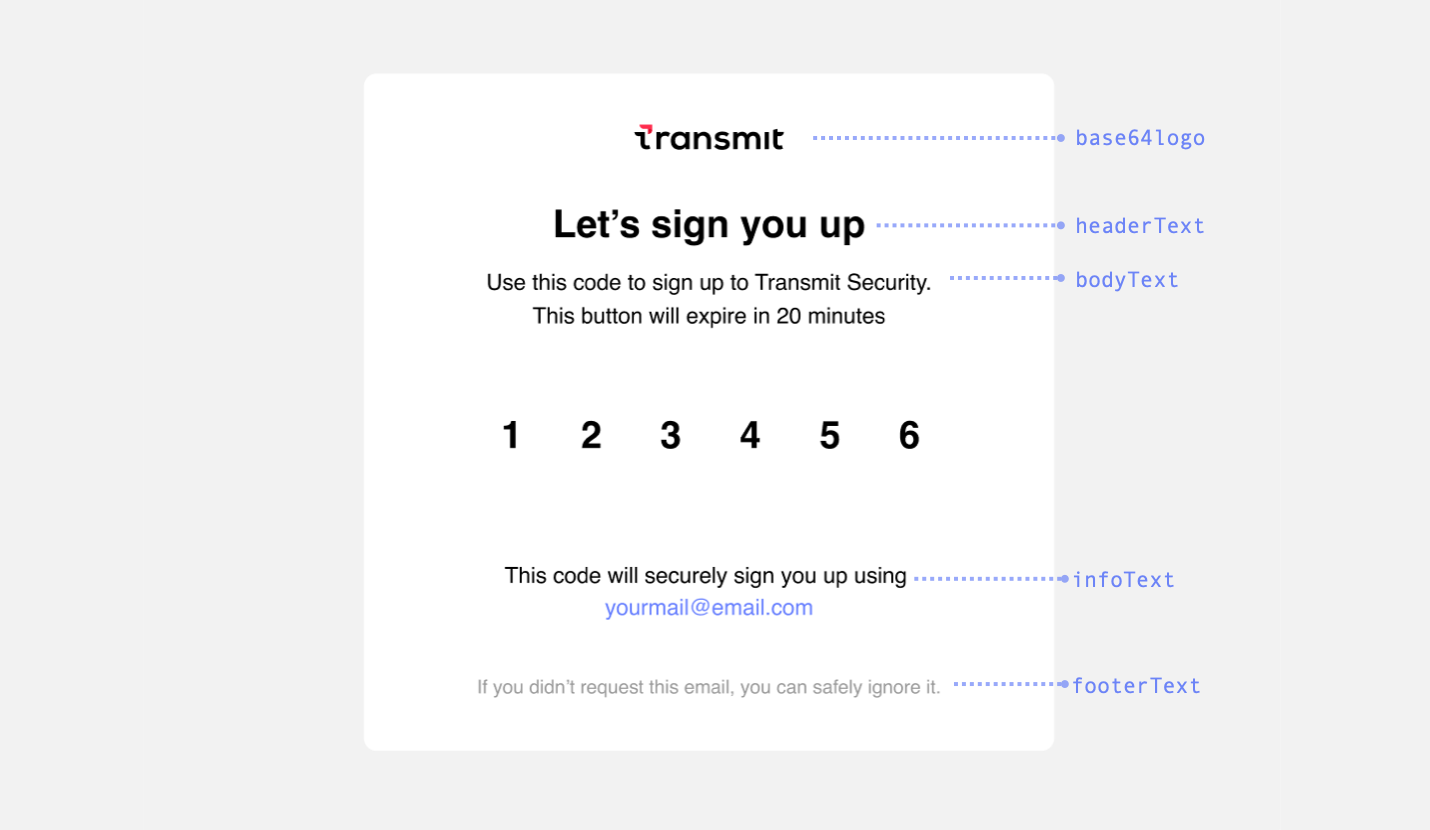One-time passcodes (OTPs) can be sent to users by email in order to authenticate existing users or create new users.

Create the redirect endpoint that will receive an authorization code once the email OTP is validated. This code will later be exchanged for an ID and access token. The redirect URI should accept code as a query parameter. For example, if https://domain.com/verify is your redirect URI, Mosaic will return https://domain.com/verify?code=123abc when the OTP is validated.
Add the redirect URI (e.g., https://domain.com/verify) as an allowed redirect URI for your Mosaic application. This will also be the redirect_uri that you'll need to pass in the send request.
From the Admin Portal under Applications, click on your application to edit your application settings and add this URI under Redirect URIs. If you don't already have an application, create a new application.
Use a send request like the one below to send an OTP to the specified email address. The create_new_user parameter will determine if this flow applies to new users, or only to existing ones. If set to true (and public sign-ups are enabled for this application), a new user is created once the code is exchanged if no user is found for the specified email address. The redirect_uri should correspond to the redirect endpoint you created in step 1 and added as a redirect URI in step 2.
This flow is described in the sequence diagram above.
Make sure you have a valid client access token to authorize the request. If not, you'll need to get one. Learn more
curl -i -X POST \
https://api.transmitsecurity.io/cis/v1/auth/otp/email \
-H 'Authorization: Bearer 91827321837bdfjf' \
-H 'Content-Type: application/json' \
-d '{
"email": "name@example.com",
"redirect_uri": "https://domain.com/verify",
"create_new_user": true
}'If you want to customize the email, see Next steps.
Once the user enters the email OTP they received, it should be validated by sending a validation request like the one below. This endpoint validates the passcode against the specified email address. If successful, a response returns a URI in the result field—your client should send a GET request to this URI to get forwarded to your redirect URI with the code that you should exchange for the token in the next step.
curl --request POST \
--url https://api.transmitsecurity.io/cis/v1/auth/otp/email/validation \
--header 'Authorization: Bearer 91827321837bdfjf' \
--header 'Content-Type: application/json' \
--data '
{
"email": "name@example.com",
"passcode": "123456"
}
'Upon sending a GET request to the URI returned by the email OTP validation endpoint, the browser is redirected to the redirect URI specified in send request. The URI will include a code in the query that you'll need to exchange for ID and access tokens by sending a /oidc/token request like the one below. Replace placeholders with the code you received in Step 4, your redirect URI, and your client credentials that can be found in your application settings from the Mosaic Admin Portal.
curl -i -X POST \
https://api.transmitsecurity.io/oidc/token \
-H 'Content-Type: application/x-www-form-urlencoded' \
-d client_id=CLIENT_ID \
-d client_secret=CLIENT_SECRET \
-d code=CODE \
-d grant_type=authorization_code \
-d redirect_uri=REDIRECT_URIOnce you've completed a basic integration, here are some customizations you can consider:
The following default email templates can be customized either from the Admin Portal or via API (but not both):
- Sign up: sent to log in a user for the first time (if you allow auth flows to create new users)
- Login: sent to log in an existing user
From the Admin Portal (B2C or B2C Identity based on your setup > Authentication methods > One-time passcodes), you can customize the color of the email address that appears in the message of the default templates. The email message will use the application's logo and name. See the screenshots below for the default texts.
To customize the email subject, text and appearance, use the email_content object in the send request, for example:
curl -i -X POST \
https://api.transmitsecurity.io/cis/v1/auth/otp/email \
-H 'Authorization: Bearer 91827321837bdfjf' \
-H 'Content-Type: application/json' \
-d '{
"email": "name@example.com",
"redirect_uri": "https://acme.com/verify",
"create_new_user": true,
"email_content": {
"subject": "Sign up to Acme",
"base64logo": "data:image/png;base64,iVBORw0KGgoAA...XEzGmCC",
"headerText": "Let'\''s sign you up",
"bodyText": "Use this code to sign up to Acme",
"infoText": "The code will securely sign you up",
"footerText": "If you didn'\''t request this email, you can safely ignore it."
}
}'If you pass the email_content object, all the email branding will be taken from there and the default template won't be used at all. This means that if a field is not specified, it will be treated as empty.
Here are screenshots of the email templates with their customizable field names:


From the Admin Portal ( B2C or B2C Identity based on your setup > Authentication methods > One-time passcodes), you can configure the OTP policy for your app:
- Expiration time: set the OTP expiration period in minutes.
- Failed attempts lockout policy: set the number of failed login attempts that trigger a temporary user lockout and specify the lockout duration in minutes.
- Code length: set the length of the one-time code.
For complete information about email OTP settings, see Customize login methods.